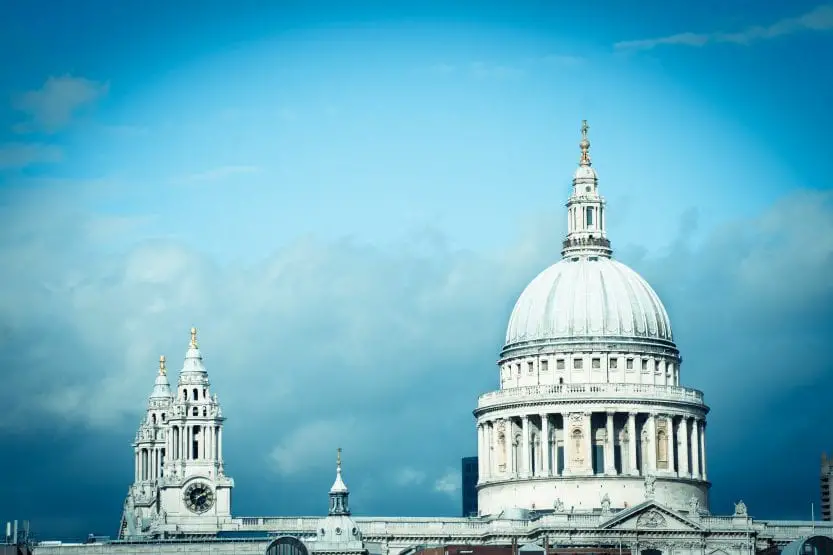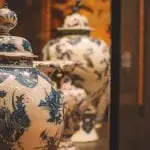Picture 1: Source
Five cathedrals where blue is an important element Of the three primary colors, blue is the third. It is the color of Earth’s most stunning natural features, the sky and the sea. Biblically, blue signifies the Word of God. It is the favored color to represent His teachings. The color blue is also said to represent authority and the Holy spirit. The land God chose, Israel, is portrayed in a cloak of blue since the time of David. It remains the color of Israel’s flag even today.
The biblical meanings of the blue color were taken into account during the design of various cathedrals around the world. Historians have not failed to interpret and discuss these specifics in both spiritual and academic literature. The early cathedrals were decorated with naturally occurring dyes of blue. From the Egyptians to the Romans, blue was exceedingly used in paintings, jewelry, clothing and buildings among others. According to Matthew 9:21, the woman who had issue of blood for twelve years said, “I shall be whole again, if I touch the hem of His garment”. The hem of His garment is also blue.
Read on to discover five cathedrals from different parts of the globe where blue is an important element.
Church of St. Elizabeth, Slovakia
First up, the church of St. Elizabeth in Slovakia, also known as the Blue Church. This was consecrated to Elizabeth, princess of Hungary. It is also referred to as “The Little Blue Church” and was built from 1908 to 1913. The façade, mosaics, glazed roof and majolica are painted in different shades of blue. A line of blue tiles and wave strip tiles encircle the church. Built in the Hungarian Secessionist style, this church is a shock of blue against its serene backdrop. The richly decorated altarpieces and pews in the single-nave structure are pastel shades of blue. It accentuates the delicate interiors against the white walls. St. Elizabeth devoted her life to uplifting the poor after the untimely death of her husband, Louis of Thuringia. She is depicted giving alms to the poor in a painting awash in blue hues within the church.

Pic 2: Source
St. Nicolas Naval Cathedral, Russia
This cathedral was built from 1753 to 1762 in Central Saint Petersburg. This cathedral dominates its landscape as it rises to a majestic height above all its neighboring buildings. It is a sight to sore eyes with its striking blue walls and its five domes gilded in gold shades. It is closely associated with the Russian Navy as it served as the main shrine until the Russian Revolution. The main church is dedicated to Saint Nicolas, the patron saint of seamen. The Russian Navy’s insignia holds a prominence for the blue color among others. It seems to have come alive while this cathedral was designed.
The color is elegantly applied to the panels running around the ceiling of the cathedral in contrast to the ivory white that the building is skirted with. There is a free-standing bell tower, which is also a shade of blue, gilded with gold to match the main cathedral.

Pic3:Source
Cathedral of the Immaculate Conception, Ecuador
This church is commonly referred to as the New Cathedral of Cuenca and is situated in Cuenca, Ecuador. The East facing cathedral is surmounted by three prominent domes which are painted a striking blue with golden highlights. It is believed to have been constructed for over a century beginning from 1885. The stained-glass windows of the cathedral are an art form in themselves and an element to appreciate. The windows are colored majorly in blue and red, but other colors like white, orange, purple and green also make an appearance. Moses and St. Petrus are depicted in orange robes emerging from a royal blue background in these windows.
Other delicate decorative designs with prominent blue shades are crafted in the stained-glass windows that stand several feet in height. The glass work tips the hat to the sense of design and symmetry of the artists of the time. The particular shade of blue is called sapphire blue and was derived from cobalt oxide. To finish the piece, the artisans had to paint inside the glass with a fusion of glass fillings, metal oxides and vinegar. The finished product is an enchanting vision to behold.
Chartres Cathedral, France
Also known as the Cathedral Of Our Lady Of Chartres, it is situated in Chartres, France. It is about 80 km from Paris. It is considered a masterpiece of the High Gothic and Romanesque styles of architecture. Its roof is painted a light shade of aqua. Built between 1194 and 1220, it is most notable for hosting the coronation of King Henry IV of France in 1594.
The Cathedral itself appears to be bathed in blue light on a sunny day. Since it was built in the 12th century, it carries the trademark glass window work of its time, resulting in blue light filtering through the windows. The walls facing all the four directions have stained-glass windows on them and fewer plain glass windows to ensure a dark but bluish vibe to the structure. The major attraction is the “Notre-Dame de la Belle-Verrière” or “The Blue Virgin” glass panel. Its striking color is a major achievement of the artisans. The Virgin is depicted wearing a blue robe with the Christ Child seated on her lap. It is an enthralling vision in blue light.

Pic4: Source
Saint Cecilia Cathedral, France
The Cathedral Basilica of Saint Cecilia is considered to be the largest brick building in the world. It is the seat of the Catholic Archbishop of Albi and was constructed from 1282 for 200 years. It is most known for its iconic blue ceiling murals. The walls and ceiling of whole nave and organ of the church are covered in stunning blue-colored regular patterns. This feature of the cathedral gives the patrons a feeling of walking into the belly of the ocean. The soft blue makes up in tranquility what it lacks in depth of shade. The imposing high ceiling is painted with floral designs in white on its blue background. It also depicts saints and other patterned designs in different shades of blue.



